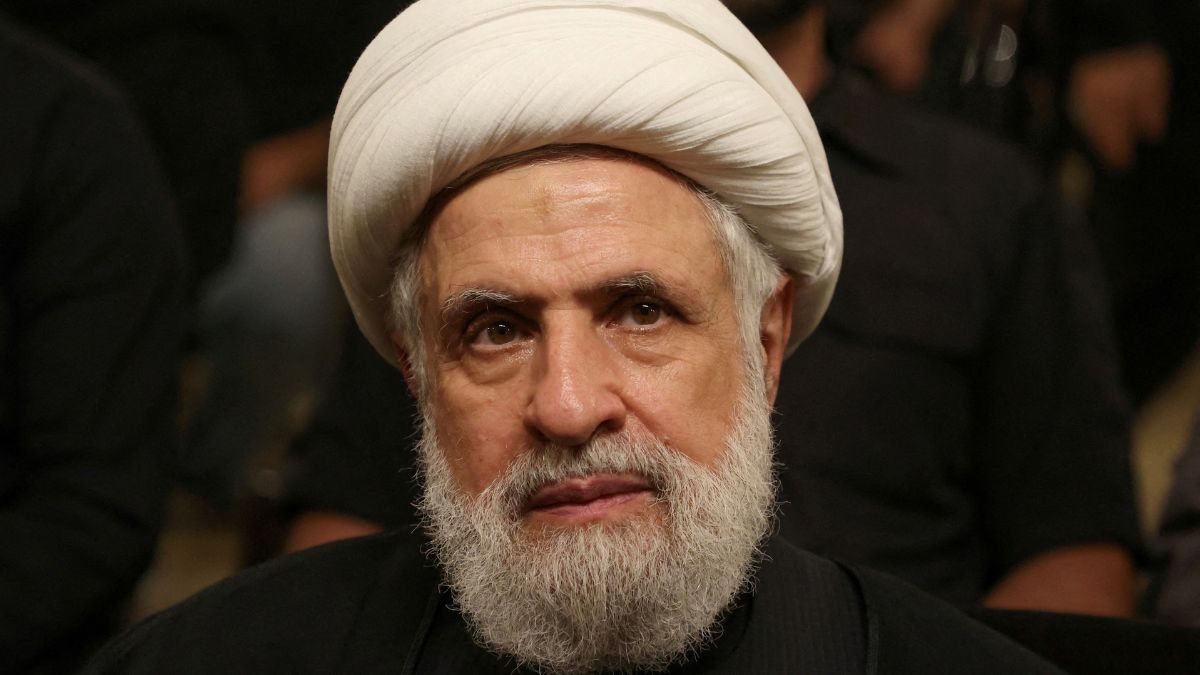Lebanese armed group Hezbollah announced on Tuesday that its deputy leader Sheikh Naim Qassem was chosen to succeed Secretary General Hassan Nasrallah as the leader, who was killed over a month ago in an Israeli airstrike on Beirut’s southern suburb.
Qassem, who has been Hezbollah’s acting head since Nasrallah’s death, was elected by the group’s Shura Council following its established procedure for appointing a new secretary general. The 71-year-old has long been a key figure within Hezbollah and is recognised as one of its founding members.
In a statement from an undisclosed location on October 8, Qassem described the ongoing conflict with Israel as “a war about who cries first,” adding that Hezbollah would not fail despite facing what he described as “painful blows” from Israeli forces.
Like his predecessor Nasrallah, Qassem is a founding member of Hezbollah, the Shiite political and armed group. Known for his white turban and grey beard, the cleric is frequently seen as the public face of Hezbollah.
ALSO READ | Who was Hashem Safieddine Hassan Nasrallah’s successor, killed by Israel? Which Hezbollah leaders remain?
So, who is Sheikh Naim Kassem?
1. Sheikh Naim Qassem was appointed Hezbollah’s deputy chief in 1991 by then-Secretary General Abbas al-Musawi, who was killed in an Israeli helicopter strike the following year.
2. When Nasrallah took over as leader, Qassem continued in his role and became a prominent spokesman for Hezbollah, regularly giving interviews to international media, especially as cross-border hostilities with Israel escalated over the past year.
Impact Shorts
More Shorts3. Following Nasrallah’s death in an Israeli airstrike on Beirut’s southern suburbs on September 27, Qassem was the first of Hezbollah’s senior leaders to address the public, delivering televised remarks on October 8, his second since tensions with Israel flared in September.
4. Qassem was born in 1953 in Beirut to a family originally from southern Lebanon. He studied chemistry at the Lebanese University and worked as a chemistry teacher while pursuing religious studies. During this time, he co-founded the Lebanese Union for Muslim Students, an organisation that promoted religious values among students.
5. In the 1970s, he joined the Movement of the Dispossessed, founded by Imam Moussa Sadr to support Lebanon’s marginalised Shiite community. This group later evolved into the Amal movement, one of the main armed groups in Lebanon’s civil war and now a prominent political force.
ALSO READ | From Yayha Sinwar to Hassan Nasrallah: The Hamas and Hezbollah leaders killed by Israel since Oct 7 attacks
6. He then became part of the newly formed Hezbollah, established with Iranian support following Israel’s 1982 invasion and occupation of southern Lebanon.
7. He was involved in key meetings that led to Hezbollah’s formation with support from Iran’s Revolutionary Guards in response to Israel’s 1982 invasion of Lebanon. Since Hezbollah entered Lebanese politics in 1992, he has served as the chief coordinator for the group’s parliamentary campaigns.
8. In 2005, he published a history of Hezbollah, offering a rare “insider’s look” into the organisation. Notably, he wears a white turban, unlike Nasrallah and Hashem Safieddine, who wore black turbans as descendants of the Prophet Muhammad.
9. Earlier in October, UAE-based Erem News, citing an Iranian source, reported that Qassem had left Lebanon for Iran over fears of an Israeli assassination attempt. According to the source, he left Beirut on 5 October, travelling via Damascus to Tehran on an Iranian plane accompanied by Iranian Foreign Minister Abbas Araghchi.
10. Nasrallah was killed in an Israeli airstrike on September 27, and senior Hezbollah leader Hashem Safieddine, considered a probable successor, was killed in strikes a week later. Since then, Qassem has delivered three public addresses, including an October 8 statement supporting ceasefire efforts for Lebanon.
With inputs from agencies
)